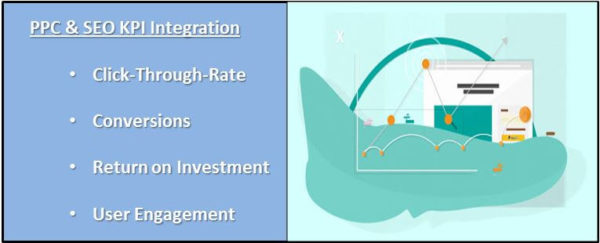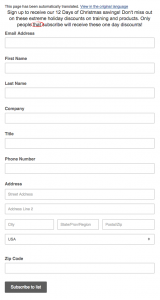Are your SEO and PPC teams working in silos? Columnist Julian Connors discusses several ways SEO and PPC can combine efforts to improve their strategies and drive more conversions.

It has been quite a year for the Search Engine Results Page (SERP).
We’ve seen numerous algorithm updates, including a final Penguin update and the introduction of Possum. We also saw major changes to the way ads are displayed on desktop SERPs. Google continues to tweak how online consumers receive content through organic and paid listings.
In order to meet the demands of today’s search landscape and connect with more qualified consumers, strategists need to create campaigns that treat SEO and PPC as a unified silo, as opposed to separate disciplines.
Google’s never-ending quest for SERP perfection

The ongoing adjustments to the SERP layout are meant to help Google better align with consumer objectives by improving the content quality and relevance of listings.
While this certainly allows Google to become a better service provider for online consumers, it also presents new challenges for SEO strategists. Each adjustment requires strategists to develop new methods for ranking within prime search listings.
Integrating SEO with PPC
Developing digital marketing campaigns that combine SEO with PPC is not only necessary for achieving prime listing positions, it’s now the only way to maximize traffic and conversion opportunities.
As the former Organic Search Manager for a Fortune 500 brand that specializes in home care, I was responsible for developing comprehensive, complex digital campaigns that focused on consumer behavior alignment and conversion optimization.
When our team made the effort to combine both SEO and PPC strategies/data, we were able to identify a multitude of critical data points dedicated to consumer behavior, intentions and location/geography.
This level of precision allowed us to:
- modify our organic keyword strategy so that we could create and optimize new content to rank within specific geographic locations, applying exact phrases used by our target audience to align with their intentions;
- adjust our PPC budgets so that we were only running ads within the most popular markets and effective time frames; and
- align our PPC ads with their offline marketing schedule to maximize awareness and conversions.
Overall, these actions resulted in:
- 30-percent increase in organic traffic
- 25-percent increase in paid clicks
- 35-percent savings in ad spend
- 20-percent increase in quarterly profits
Sharing information to create one rockstar team

Most digital marketing agencies are built with SEO and PPC sitting on opposite sides of the building.
Both teams work tirelessly, developing keyword strategies, creating unique content and employing a number of tactics that focus on attracting online consumers. Even though each team uses different systems and tactics to drive conversions, there is a tremendous amount of critical data that can be used to create a synergistic and harmonious relationship, bolstering results for everyone.
Check out the following ways that SEO and PPC can combine efforts to improve their strategies, as well as to drive conversions like never before.
Share keyword data to increase the intelligence of your campaigns
Keywords are the foundation for any successful SEO or PPC campaign.
For PPC strategists, keywords are used to facilitate creative relationships with consumers who are located further down the conversion funnel.
In the world of SEO, keywords are used to dictate the information architecture of a website, as well as its content strategy.
Both teams conduct keyword research in order to identify terms that align with their target audience’s online behavior, project traffic growth and drive qualified conversions.
Because more consumers are using long-tail phrases and complete sentences when searching than ever before, keyword data must be shared across both teams in order to offer coordinated messages that keep brands top-of-mind and solicit qualified conversions.
Set shared goals and combine metrics

Using the information both teams collect doesn’t just offer more accuracy around consumer behavior; it can also be used to support your brand’s inbound marketing campaigns.
Teams that combine their PPC data with organic user engagement metrics (e.g., average session duration, bounce rate, pages per session) are able to gain unique insight around how consumers are interacting with certain digital properties, as well as how they behave once they leave your site.
The metrics your SEO and PPC teams review in order to establish their key performance indicators (KPIs) should be almost identical. When this happens, you are able to apply this information to other marketing channels like PR, social media or email marketing.
Remove silos to improve production
Approaching SEO and PPC as two separate silos isolates critical information and diminishes the productivity level of even the most well-executed online campaigns.
It almost never makes sense to keep these two disciplines apart, as the teams can offer each other particular points of information that are vital for identifying and fulfilling conversion opportunities.
Use data that informs cross-channel decisions and justifies action
When it comes to gathering enough actionable data to develop robust, intelligent strategies, extracting information from one specific field, like SEO or PPC, is not enough.
Although the quality of your organic data may provide insight on how to create functional plans, the amount of verified information organic search can capture may not be sufficient to justify real action.
Conversely, information that’s gathered from the search engines themselves as a result of paid search activity is both valuable and based on a substantial sample size that allows you to move forward confidently.
If your organization treats SEO and PPC as two distinct entities, try to make sure that your efforts are aligned through shared:
- reporting;
- objectives; and
- communication portals.
The goal of merging both disciplines together is not to have the same people performing the same type of work. Instead, it is meant to increase internal awareness of key conversion opportunities.
Action & impact: how to maximize SERP visibility
Now that we have covered the principles that allow your SEO and PPC teams to work together efficiently, use the following tactics to own as much real estate within Google SERPs as possible.
Landing page optimization
Optimizing your landing pages to drive qualified traffic and conversions is a fundamental component of any digital marketing campaign. SEO strategists can provide their PPC counterparts with critical information around consumer intentions, objectives and demands to reduce bounce rate and increase click-through-rates (CTR).
PPC strategists can then use their insights around consumer online activity to perpetuate paid ads that only appear in front of the most qualified consumers possible. By doing this, both teams are able to support each other in ways that improve user experience, maximize relevant traffic and reduce wasted ad spend.
Approach SEO & PPC holistically

Running paid ad campaigns that 1) offer precise messages and 2) are located next to your organic listings on Google can increase overall CTR and lead to a higher return on your investment.
While managing the online campaign of Sonos in 2015, our team ran paid ads alongside keywords that the electronics company already ranked for organically. This type of positioning was extremely effective for creating the sense that we were more prominent than our competitors and thus, more credible.
Because of this, total revenue through organic and paid channels increased by 37 percent year over year.
Understand seasonality
Share seasonal data and information relating to other offline variables to learn how to approach and optimize for specific times throughout the year when consumer activity peaks.
Use this information to create a calendar of events that guides you on how to:
- create organic content that aligns with specific consumers within specific locations;
- run paid ads that contain unique messaging based on location and intention;
- maximize brand awareness during peak activity points like the holiday shopping season; and
- increase consumer reaction and conversions during seasonal low points.
Get in front of the competition
SEO and PPC strategists should work together as a cohesive unit to share key points of information that highlight how and what the competition is doing from a digital perspective.
Create monitoring systems that identify your competitors in terms of:
- positioning within SERPs;
- pricing;
- key message points/branding initiatives; and
- primary and secondary keyword terms.
Use this information to adjust your ad spend, to improve CTR and to outrank your opponents by taking up more real estate within SERPs.
[Article on Search Engine Land.]
Some opinions expressed in this article may be those of a guest author and not necessarily Marketing Land. Staff authors are listed here.
Marketing Land – Internet Marketing News, Strategies & Tips
(87)
Report Post









